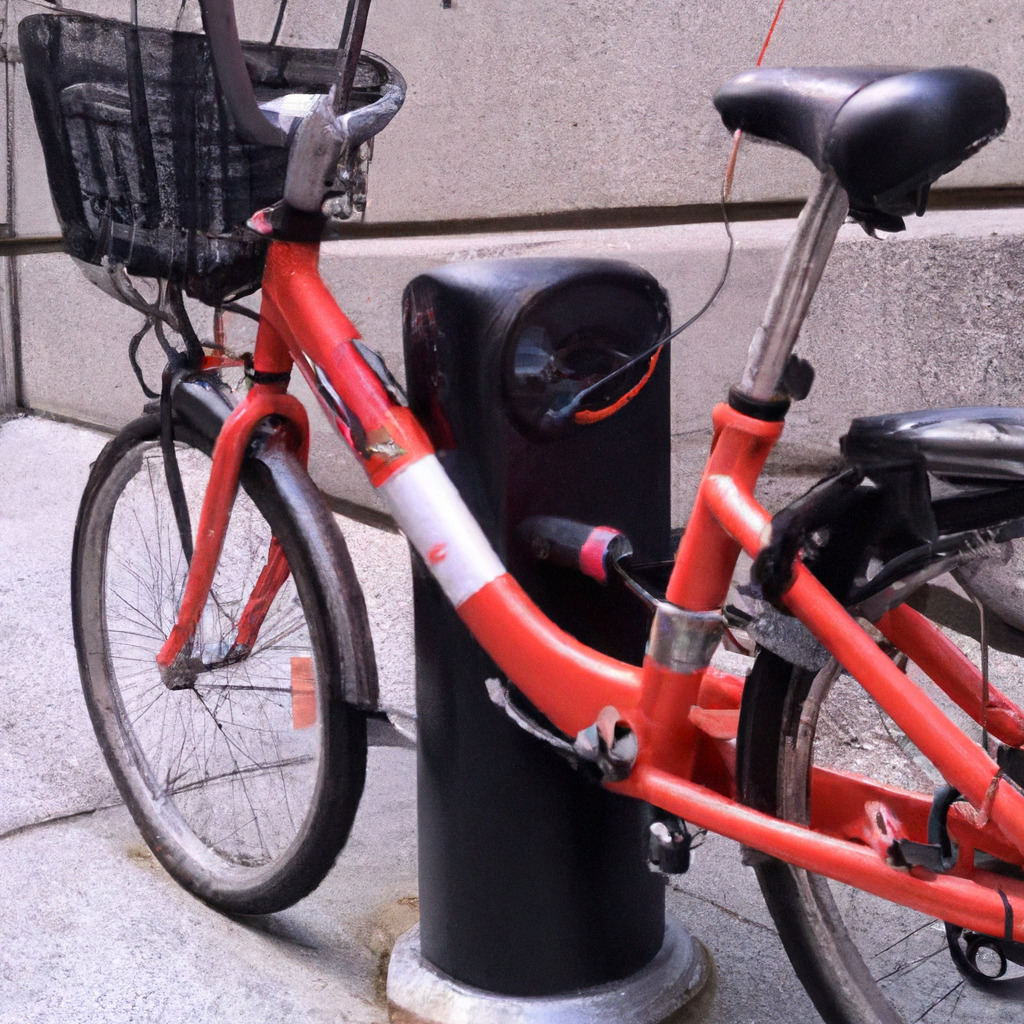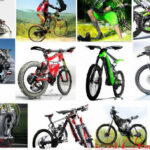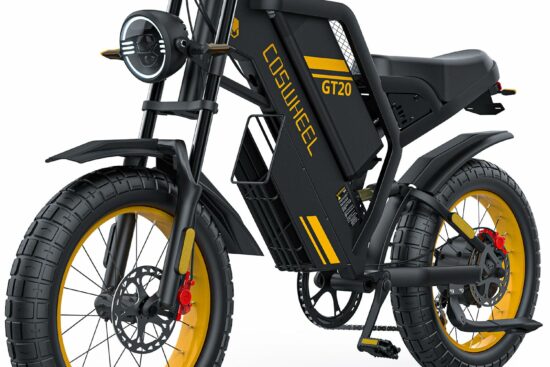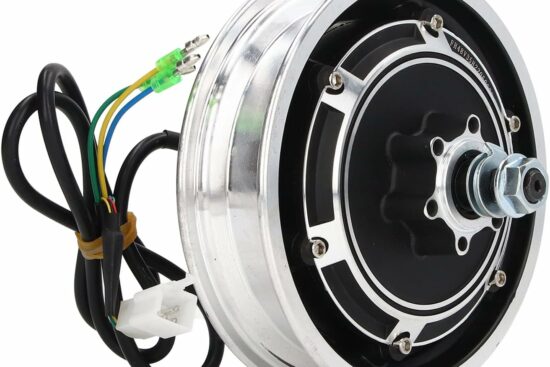
Electric bikes have revolutionized the way people commute in cities, presenting both opportunities and challenges for traffic management and urban planning. As the popularity of electric bikes continues to grow, it becomes important to understand their impact on traffic flow and infrastructure. This article explores the various ways in which electric bikes have influenced traffic patterns and urban planning, highlighting the importance of incorporating these two-wheeled wonders into the larger transportation ecosystem.

Introduction
Electric bikes, or e-bikes, have experienced a rapid surge in popularity in recent years. These innovative vehicles combine the benefits of traditional bicycles with the convenience and efficiency of electric power. As e-bikes become more prevalent on our streets, it is crucial to understand their impact on traffic patterns and urban planning. This article aims to provide a comprehensive overview of electric bikes, their influence on traffic congestion, safety considerations, impact on air quality, integration into urban planning, promotion of sustainable transportation, as well as potential challenges and solutions. By studying the impact of e-bikes, we can develop effective strategies to create inclusive, sustainable, and well-planned cities.
1. Electric Bikes: An Overview
Technology behind electric bikes
Electric bikes utilize a combination of human pedaling power and an electric motor to provide assistance and enhance the riding experience. The electric motor is typically powered by a rechargeable battery, which can be charged using a standard electrical outlet. These bikes often come with different modes, allowing riders to adjust the level of assistance they receive from the motor.
Advantages over traditional bicycles
One of the main advantages of electric bikes over traditional bicycles is the assistance provided by the electric motor. This assistance allows riders to conquer hills and cover longer distances with ease, making e-bikes an appealing option for individuals who may not have the physical capabilities to ride a regular bicycle. Additionally, e-bikes can help reduce the strain on riders’ joints and muscles, making them accessible to a wider range of individuals, including seniors and those with physical limitations.
Different types of electric bikes
There are various types of electric bikes available in the market, catering to different riding preferences and purposes. Some common types include commuter e-bikes, designed for daily urban commuting, and electric mountain bikes, built for off-road adventures. Folding e-bikes offer the convenience of compact size and easy storage, while cargo e-bikes are ideal for transporting goods or carrying passengers. Each type has its unique features and suitability for different urban contexts.
2. Electric Bikes and Traffic
Reduction in traffic congestion
One significant impact of electric bikes on traffic is their potential to reduce congestion on roadways. By encouraging individuals to choose e-bikes as a mode of transportation for short-distance commutes, less congestion is created as fewer cars take up road space. In crowded cities, where traffic congestion is a persistent issue, the integration of e-bikes can offer a solution to alleviate the strain on existing transportation infrastructure.
Promotion of active transportation
Electric bikes promote active transportation by providing a convenient and eco-friendly mode of travel. Commuters who would otherwise rely on cars or public transportation can opt for e-bikes, combining physical activity with their daily commute. This shift towards active transportation has numerous health benefits, including increased physical fitness and reduced risk of chronic diseases. Moreover, promoting active transportation aligns with sustainable goals, reducing greenhouse gas emissions and promoting a cleaner environment.
Integration with existing transportation infrastructure
To fully realize the benefits of e-bikes, it is essential to integrate them with existing transportation infrastructure. This integration includes creating safe and accessible bike lanes, implementing bike-sharing programs, and providing secure parking facilities for e-bikes. By incorporating electric bikes into the existing transportation network, cities can ensure smooth and efficient mobility while encouraging the adoption of this sustainable mode of transportation.
3. Electric Bikes and Safety
Comparing accident rates with traditional bicycles
One concern often raised about electric bikes is their safety compared to traditional bicycles. However, studies have shown that the accident rates between e-bikes and regular bicycles are comparable. Proper rider education and adherence to traffic laws can reduce the risk of accidents for both types of bikes. Importantly, e-bike riders should be aware of the increased speed capabilities of their vehicles and ride responsibly to ensure the safety of themselves and others.
Addressing concerns about speed and reckless riding
Some individuals worry that the increased speed potential of electric bikes may lead to reckless riding behavior. However, regulations and proper enforcement can minimize this risk. Implementing speed limits for e-bikes and ensuring riders are adequately trained and licensed can address these concerns. Additionally, public awareness campaigns can educate riders on responsible riding practices and etiquette to create a safer environment for all road users.
Introducing regulations and licensing requirements
To strike a balance between promoting e-bike usage and ensuring safety, regulations and licensing requirements need to be established. The categorization of e-bikes into different classes based on their top speed and power output can help define appropriate rules. Licensing requirements may include mandatory training, age restrictions, and adherence to traffic laws. These measures can ensure that e-bikes are safely integrated into the existing traffic ecosystem.

4. Electric Bikes and Air Quality
Impact on reducing air pollution
With their zero-emission electric motors, e-bikes play a significant role in reducing air pollution, particularly in urban areas where vehicle exhaust is a major contributor. By replacing short car trips with e-bike rides, emissions of pollutants such as carbon monoxide, nitrogen oxides, and particulate matter can be significantly reduced. The cumulative effect of widespread e-bike adoption can have a substantial positive impact on air quality, leading to improved public health outcomes and a reduction in respiratory diseases.
Contributing to the fight against climate change
Electric bikes contribute to the fight against climate change by offering a sustainable alternative to carbon-intensive transportation modes. By replacing cars and motorcycles with e-bikes for short-distance trips, greenhouse gas emissions can be significantly reduced, mitigating the impact of transport-related emissions on climate change. The integration of e-bikes into urban transportation systems is an important step towards achieving climate goals and creating more sustainable cities.
Encouraging the transition to clean energy sources
While e-bikes themselves have zero-emission electric motors, it is essential to consider the environmental impact of the electricity used for charging their batteries. To maximize their positive impact on air quality and climate change, it is crucial to transition to clean energy sources for powering these vehicles. Encouraging the use of renewable energy for e-bike charging, such as solar or wind power, can further enhance their environmental benefits and create a cycle of sustainable transportation.
5. Electric Bikes and Urban Planning
Incorporating electric bike infrastructure in city planning
As electric bikes gain popularity, it is crucial for urban planners to incorporate e-bike infrastructure into their city planning strategies. This includes the creation of dedicated bike lanes and paths that accommodate electric bikes’ potential higher speeds and wider dimensions. Additionally, bike parking facilities and charging stations should be strategically placed throughout the city to provide convenient access and encourage e-bike usage.
Creating dedicated bike lanes and charging stations
Dedicated bike lanes provide safe and accessible routes for e-bike riders, separating them from vehicular traffic and reducing the risk of accidents. These lanes should be designed to accommodate the different speeds and maneuverability of e-bikes. Moreover, the placement of charging stations at key locations, such as transportation hubs and popular destinations, enables e-bike riders to conveniently charge their batteries during their journeys, further incentivizing e-bike usage.
Policies to incentivize adoption and usage
To encourage the adoption and usage of electric bikes, cities can implement various policies and incentives. These may include subsidies or tax incentives for e-bike purchases, discounts on bike-sharing programs, and priority access to certain areas or facilities. By providing these incentives, city governments can actively promote the benefits of e-bikes and encourage individuals to choose this sustainable mode of transportation.
6. Electric Bikes and Sustainable Transportation
Promoting a shift from cars to electric bikes
Electric bikes offer a viable alternative to private car usage, especially for short-distance trips within urban areas. By encouraging individuals to use e-bikes instead of cars, cities can reduce traffic congestion, air pollution, and the demand for parking spaces. Integrating e-bike sharing programs and ensuring the availability and accessibility of charging infrastructure can further facilitate this shift toward electric bikes as a sustainable transportation option.
Encouraging multi-modal transportation
Electric bikes can seamlessly integrate with other modes of transportation, promoting a multi-modal approach to urban mobility. By combining e-bike trips with public transportation, such as buses or trains, individuals can enjoy the benefits of both flexibility and convenience. Coordinated scheduling and infrastructure planning can enable smooth transitions between different modes of transportation, making the overall travel experience more efficient and enjoyable.
Potentials for reducing road expansion projects
As cities continue to experience population growth and increased demand for transportation infrastructure, road expansion projects become a common strategy to accommodate more vehicles. However, promoting electric bikes as a sustainable transportation option can help alleviate the need for extensive road expansion. By encouraging individuals to choose e-bikes for short-distance trips, cities can reduce the strain on existing road networks, saving costs associated with expensive road expansion projects and preserving green spaces.
7. Challenges and Potential Solutions
Limited battery range and charging infrastructure
One challenge for e-bike users is the limited battery range, which can deter individuals from choosing electric bikes for longer trips. To address this, cities can invest in expanding the network of charging infrastructure, ensuring that e-bike users have convenient access to charging stations throughout their journeys. Advancements in battery technology, including improved energy density and faster charging capabilities, can also help overcome this limitation in the future.
Managing parking and storage of electric bikes
With the increasing popularity of electric bikes, managing parking and storage becomes a significant concern. Cities need to provide secure and adequate bike parking facilities to prevent theft and ensure the availability of parking spaces. Designated areas for e-bike parking equipped with charging stations can further incentivize e-bike usage and contribute to a well-organized transportation ecosystem.
Addressing the affordability barrier
While the long-term cost savings of using e-bikes compared to cars are evident, the upfront cost of purchasing an electric bike may be a barrier for many individuals. Cities can address this issue by implementing subsidies or financial assistance programs to make e-bikes more affordable. Additionally, bike-sharing programs that offer e-bikes on a rental basis can provide a cost-effective option for individuals who may not need to own an e-bike on a full-time basis.
8. Case Studies: Cities Embracing Electric Bikes
Amsterdam, Netherlands
Amsterdam is renowned for its extensive cycling infrastructure, and it has embraced electric bikes as an integral part of its transportation system. The city has dedicated bike lanes and charging stations throughout its urban landscape, making it convenient for residents and visitors to use e-bikes. Amsterdam’s embrace of electric bikes has resulted in reduced traffic congestion, improved air quality, and a healthier population.
Copenhagen, Denmark
Copenhagen, consistently ranked as one of the world’s most bike-friendly cities, has also embraced electric bikes. The city’s comprehensive cycling infrastructure includes dedicated bike lanes, traffic signals, and parking facilities specifically designed for e-bikes. By encouraging the use of electric bikes, Copenhagen has achieved a significant reduction in car usage and a corresponding decrease in traffic congestion.
Seville, Spain
Seville, once a city heavily reliant on cars, has successfully integrated electric bikes into its transportation system. The city’s introduction of an extensive bike-sharing program, including e-bikes, has led to a modal shift towards sustainable transportation. Seville’s promotion of electric bikes has not only reduced traffic congestion but also enhanced air quality and improved the overall quality of life for its residents.
9. Future Implications and Outlook
Impact on the transportation industry
The rise of electric bikes presents both challenges and opportunities for the transportation industry. As the demand for e-bikes continues to grow, manufacturers and retailers need to adapt to meet this increased demand. Additionally, the maintenance and servicing of e-bikes require specialized knowledge and skills, creating new job opportunities in the transportation sector. The industry’s response to these changes will shape the future of transportation and urban mobility.
Integration with emerging smart city initiatives
Electric bikes can be seamlessly integrated into emerging smart city initiatives, which aim to leverage technology to enhance urban living. By incorporating connectivity features into e-bikes, cities can collect real-time data on bike usage, traffic patterns, and charging needs. This data can then inform decision-making processes, optimize infrastructure planning, and improve the overall efficiency of urban transportation systems.
Potential for influencing urban design
The proliferation of electric bikes has the potential to influence urban design and the layout of cities. With the inclusion of e-bike infrastructure in city planning, design elements such as dedicated bike lanes, charging stations, and bike parking facilities will become integral components of urban landscapes. As e-bike usage increases, cities need to envision and implement designs that prioritize the needs of cyclists, creating safe and accessible spaces for electric bikes to thrive.
In conclusion, electric bikes offer numerous benefits for traffic management, air quality improvement, and sustainable urban planning. By understanding and addressing the challenges associated with e-bikes, cities can harness their potential to transform transportation systems and create greener, healthier, and more inclusive urban environments. Through proper infrastructure planning, policy implementation, and public engagement, cities can ensure the seamless integration of electric bikes into the fabric of their communities, leading to more sustainable and livable cities for all.




















